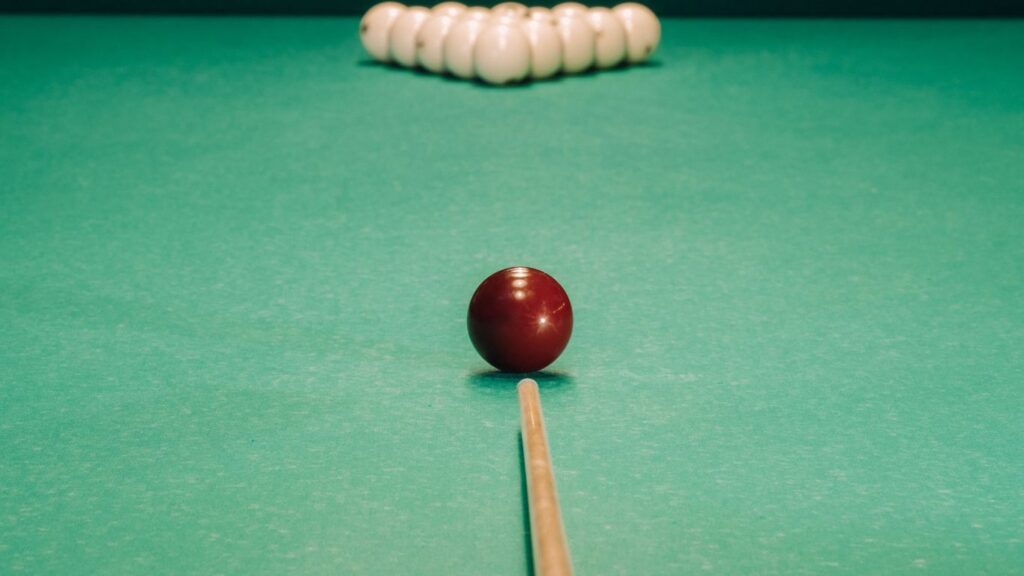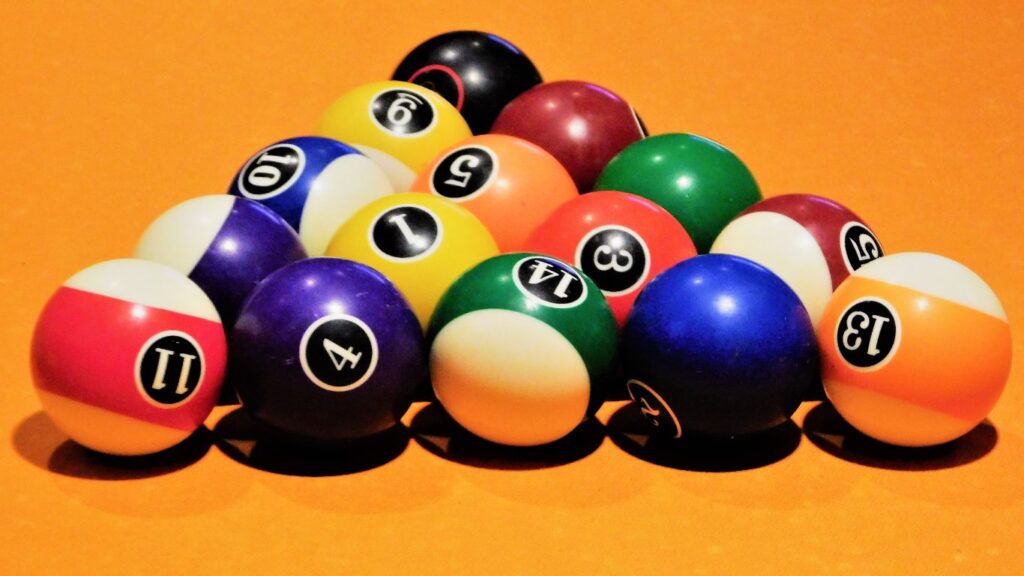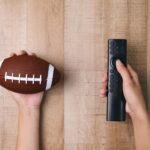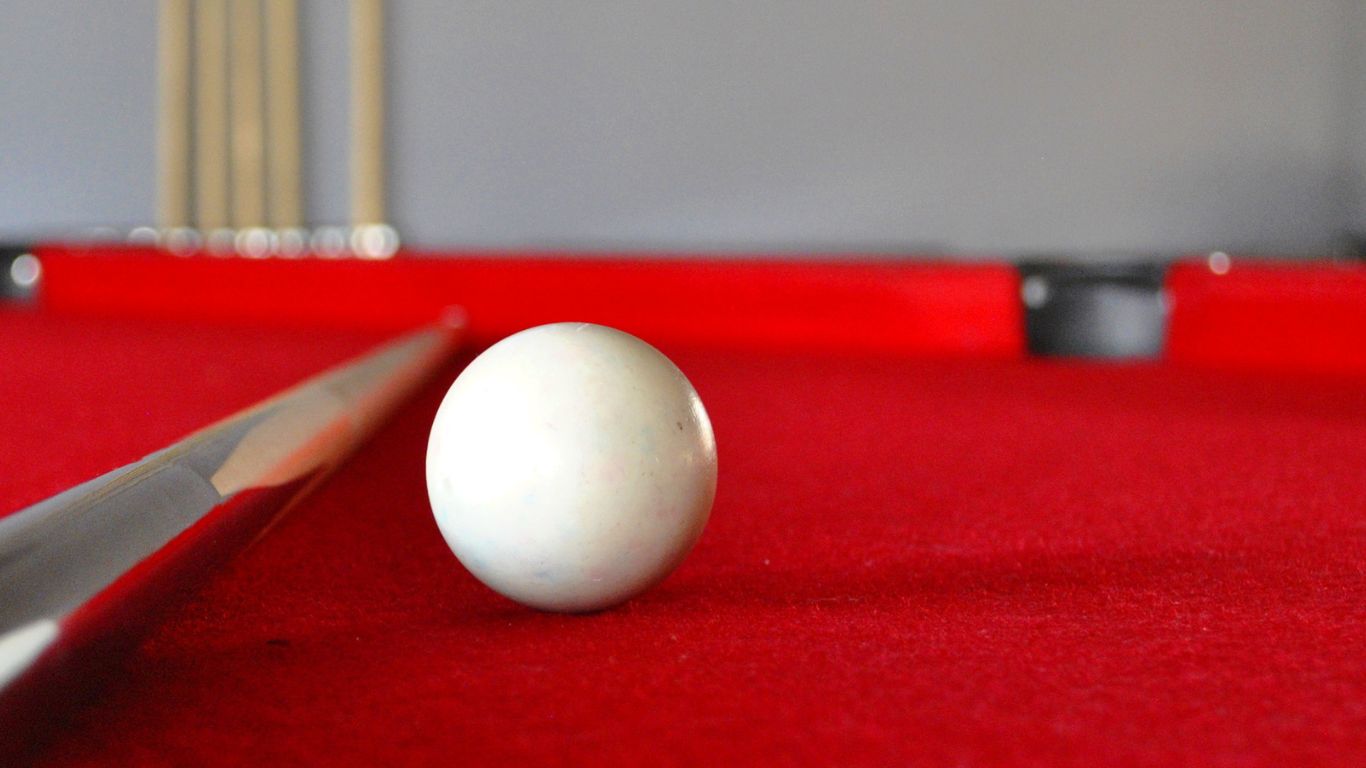How does a pool table know to return the cue ball but not the other balls? The cue ball return system is a fascinating blend of physics and engineering to enhance your gameplay experience. This guide will explore the components and mechanisms that make the cue ball return system work seamlessly.
Components of a Pool Table
Before diving into the specifics of the cue ball return system, it’s essential to understand the critical components of a professional pool table:
- Frame: Provides structural support for the table.
- Playing Surface: Usually made of slate, covered with cloth.
- Pockets: Six pockets where balls are potted.
- Rails: Surround the playing surface and assist in ball rebound.
- Cue Ball Return System: Mechanism directing the cue ball to a collection point.
Mechanism of the Cue Ball Return System
The cue ball return system operates on a straightforward mechanical principle, yet its design is quite ingenious. Here’s a closer look at how it functions:
Channels and Guides

- Design and Material:
- Channels carved into the table direct the cue ball to a specific location. These channels are often made from durable materials like high-density plastic or metal to ensure longevity.
- The design ensures that the cue ball, once pocketed, will roll smoothly along these channels using gravity.
- Reliable Return Mechanism:
- Each pocket’s channel leads to a central pathway that guides the cue ball to a hidden compartment. This pathway is carefully aligned to ensure consistent and accurate returns.
Hidden Compartment
- Size and Accessibility:
- The hidden compartment where the cue ball is stored is strategically placed, often near one of the side pockets for easy access.
- It is designed to be spacious enough to hold the cue ball securely while being easy to open for maintenance.
Safety Features
- Preventing Damage:
- Safety features like shock-absorbing materials are often integrated into the channels to avoid damage to the cue ball and the table.
- Some advanced tables may include sensors to detect and correct misalignments, ensuring the smooth operation of the return system.
Physics Behind the Return Process
The core principle behind the cue ball return system is gravity. When the cue ball is pocketed:

- Gravity pulls it down the inclined channels.
- Momentum from the initial impact helps the ball travel through the guides.
- Using smooth materials for the channels minimizes friction, allowing the ball to move effortlessly to the collection point.
Different Types of Cue Ball Return Systems
While the fundamental principles remain the same, there are variations in cue ball return systems:
- Mechanical Systems:
- Rely on purely mechanical pathways without any electronic components. These are common in traditional tables.
- Magnetic Systems:
- Utilize a magnetic cue ball (slightly different from the other balls in weight or material) that triggers mechanical gates directing it to the return channel.
- Electronic Systems:
- Advanced tables may use electronic sensors and actuators to manage the return process, offering higher precision and additional safety features.
Maintenance and Troubleshooting Tips for Cue Ball Return
Keeping your cue ball return system in top shape requires regular maintenance. Here are some essential tips:
- Regular Cleaning:
- Ensure channels are accessible from dust, debris, or chalk buildup. Use a soft brush or cloth to clean these areas.
- Inspection and Lubrication:
- Check the alignment of the guiding mechanism. Lubricate moving parts to prevent wear and ensure smooth operation.
- Check the Hidden Compartment:
- Ensure the compartment is free from obstructions and securely closed when not in use.
- Safety Feature Verification:
- Regularly test sensors and shock absorbers to ensure they function correctly.

- Integrate with Overall Table Maintenance:
- Include the return system in your routine table inspections. Qualified technicians should perform detailed checks periodically.
- User Education:
- Educate players on proper handling and gameplay to minimize potential damage to the return system.
- Maintenance Log:
- Keep a log of all maintenance activities, including dates and any issues encountered, to track the system’s condition over time.
FAQs
How does the cue ball differ from other balls in the return system?
The cue ball often has a different weight, size, or magnetic properties than the others. This slight difference enables the return system to differentiate the cue ball from the rest, ensuring it is directed to the proper return channel or compartment.
Can any ball other than the cue ball end up in the cue ball return system?
Under normal conditions and if the system functions correctly, only the cue ball should be directed to the return system. However, malfunctions or misalignments in the system could occasionally cause other balls to be misdirected.
How do I know if my cue ball return system needs maintenance?
Signs that your cue ball return system needs maintenance include the cue ball not returning correctly, unusual noises during the return process, or visible blockages or debris in the channels. Regular inspections and cleanings can help prevent issues.
Are there any special care instructions for the cue ball itself?
The cue ball should be cleaned regularly to avoid chalk buildup and ensure smooth movement through the return system. Using a microfiber cloth and cue cleaner can help maintain its condition.
What should I do if the cue ball gets stuck in the return system?
If the cue ball gets stuck, gently check the channels for obstructions or misalignments. If the issue persists, consult the table’s maintenance guide or contact a professional technician for assistance.
How often should the cue ball return system be inspected?
Routine inspections should be part of your overall pool table maintenance schedule. Depending on usage, aim for monthly inspections, with more detailed checks by a qualified technician every 6-12 months.
Can I upgrade my cue ball return system to a more advanced version?
Many pool tables, such as electronic or magnetic systems, can be retrofitted with more advanced return systems. Consult a professional to determine the compatibility and feasibility of such upgrades for your table model.
Conclusion
Understanding the mechanics of the cue ball return system enhances your appreciation for the engineering behind professional pool tables. This system ensures that your game remains smooth and uninterrupted, allowing you to focus on perfecting your shots. Remember, regular maintenance is vital to keeping your table in optimal condition. Enjoy your game, and may every shot be a winning one!










